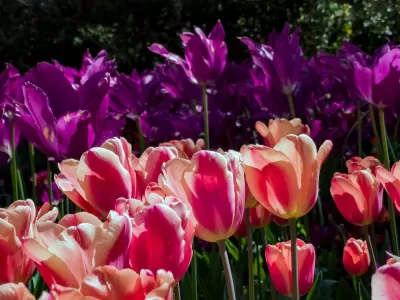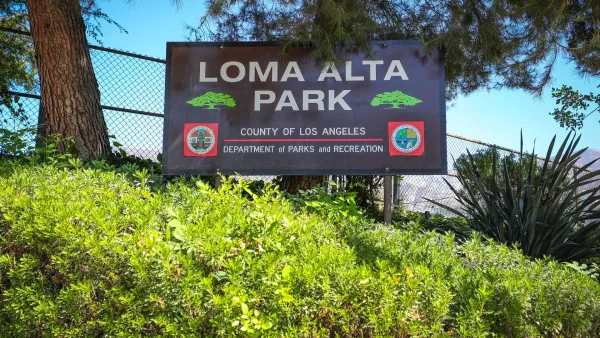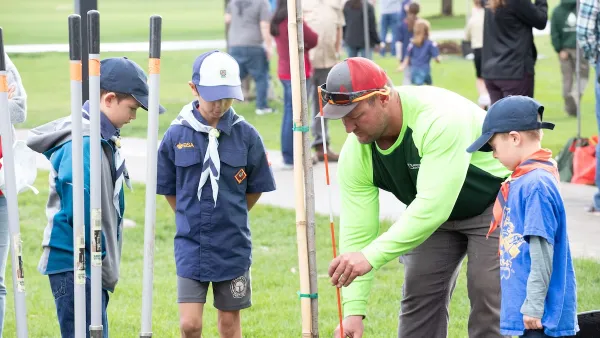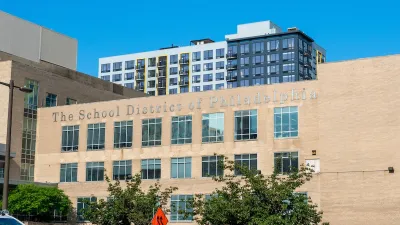Descanso Gardens’ annual planting of 35,000 tulip bulbs showcases the power of seasonal design to enhance public spaces and engage visitors.

Seasonal planting strategies play a crucial role in public gardens, parks, and designed landscapes, offering opportunities to enhance visitor engagement and ecological diversity. At Descanso Gardens in La Cañada Flintridge, an annual tulip planting tradition exemplifies how thoughtful horticultural planning can create a dynamic, ever-changing landscape. Each January, staff and volunteers plant tens of thousands of tulip bulbs in the Promenade area, just inside the garden’s entrance, ensuring a spectacular floral display in spring. This year, a record 35,000 bulbs were placed into the soil, reinforcing the significance of seasonal design in shaping public experiences and elevating the role of gardens as cultural and ecological assets.
The tulip bloom, expected to begin in late February and peak in mid-March, demonstrates the importance of timing and climate considerations in landscape planning. As tulips are weather-dependent, their growth is influenced by rainfall, temperature shifts, and seasonal variability—factors that must be taken into account when incorporating such displays into urban and park environments. By sharing a Tulip Timeline with visitors, Descanso Gardens fosters public engagement and appreciation for the natural cycles that define a garden’s life. This approach also highlights how interactive, time-sensitive programming can be integrated into park and public garden spaces to draw visitors and create memorable, immersive experiences.
Beyond its aesthetic appeal, the tulip display serves as a case study in horticultural planning and visitor experience design. The vibrant array of colors—ranging from soft pastels to bold hues—transforms the Promenade into a dynamic, immersive landscape that attracts visitors year after year. Projects like Descanso Gardens’ tulip planting offer valuable insights into seasonally adaptive design, community involvement, and the power of nature-driven placemaking. By aligning horticultural efforts with seasonal rhythms, public landscapes can serve as evolving, interactive spaces that inspire, educate, and connect people with the changing beauty of nature.
FULL STORY: The famous Descanso Gardens tulips — 35,000 of them — have been planted

Montreal Mall to Become 6,000 Housing Units
Place Versailles will be transformed into a mixed-use complex over the next 25 years.

Planetizen Federal Action Tracker
A weekly monitor of how Trump’s orders and actions are impacting planners and planning in America.

DARTSpace Platform Streamlines Dallas TOD Application Process
The Dallas transit agency hopes a shorter permitting timeline will boost transit-oriented development around rail stations.

Study: 4% of Truckers Lack a Valid Commercial License
Over 56% of inspected trucks had other violations.

Chicago Judge Orders Thousands of Accessible Ped Signals
Only 3% of the city's crossing signals are currently accessible to blind pedestrians.

Philadelphia Swaps Car Lanes for Bikeways in Unanimous Vote
The project will transform one of the handful of streets responsible for 80% of the city’s major crashes.
Urban Design for Planners 1: Software Tools
This six-course series explores essential urban design concepts using open source software and equips planners with the tools they need to participate fully in the urban design process.
Planning for Universal Design
Learn the tools for implementing Universal Design in planning regulations.
City of Mt Shasta
City of Camden Redevelopment Agency
City of Astoria
Transportation Research & Education Center (TREC) at Portland State University
US High Speed Rail Association
City of Camden Redevelopment Agency
Municipality of Princeton (NJ)





























